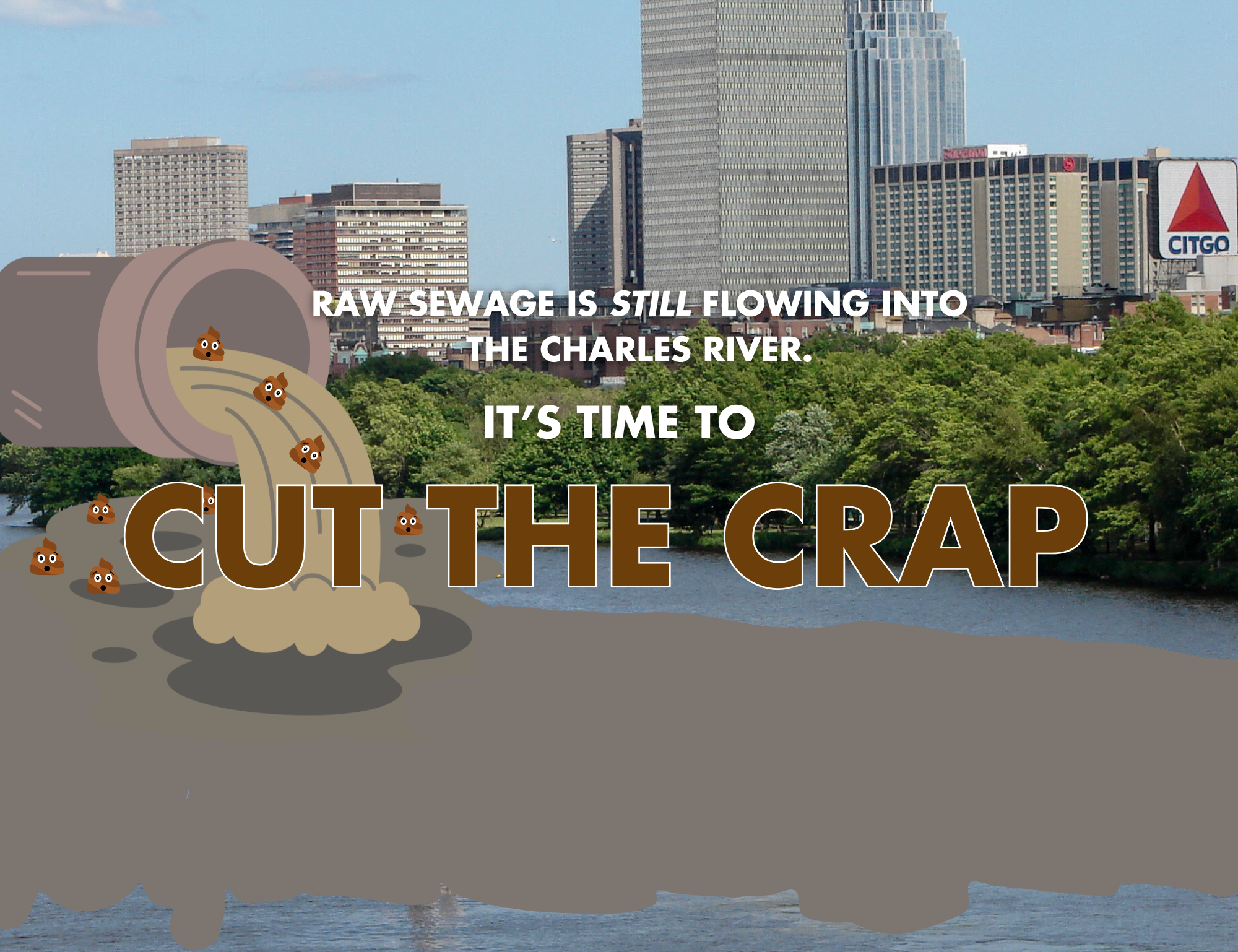
TAKE ACTION
A portion of the proceeds will go toward supporting Charles River Watershed Association.Frequently Asked Questions
-
Boston is one of the oldest cities in America. In its early days, the management of human waste was quite rudimentary - chamber pots and outhouses. Constructing pipes along the streets to convey wastewater was an advance, and the pipes were designed to carry rain (“stormwater”) as well, because the stormwater would help push the waste along to its eventual destination in the Charles River or Boston Harbor. By the 1880s work was underway on modern sewer infrastructure using flushing toilets instead of rainwater to convey the waste. For many decades, the way the city managed wastewater remained the same: sewage was discharged directly into the Charles River or the Boston Harbor. As the population grew, more and more human waste went into the river and harbor, resulting in an increasingly smelly and unhygienic city. By 1950, all seven Charles River beaches were permanently closed because the water was so unhealthy.
-
In January 2021, the Governor signed An Act Promoting Awareness of Sewage in Public Waters into law. This requires combined sewer system operators to notify the public when combined sewer overflows occur. You can sign up to receive these notifications in real time by clicking on these links, make sure to sign up for all of them (unfortunately the law did not require the operators to coordinate by water body)! Cambridge, Boston, and MWRA.
This act also created a “CSO Data Portal” where residents can access a record of discharge events since 2023.
-
Increased cases of gastrointestinal illness are associated with combined sewer overflow events. Researchers observed a higher risk of illness in the 4 days following extreme CSO events compared with days with no CSO events in Massachusetts waterways like the Charles that are not supplying drinking water. This means contamination is only occurring through the environment.
-
There are many options to reduce and eliminate CSOs. We can separate the combined pipes, using existing pipes for sewage and adding new pipes to carry stormwater. We can build large underground storage tunnels to hold stormwater or combined sewage during storms and release it slowly over time to prevent it from overwhelming the combined system. We can invest in “green stormwater infrastructure” such as rain gardens, permeable pavers, and blue roofs to capture stormwater and keep it out of the combined system temporarily or permanently. But none of these will happen to the extent needed for a healthy Charles unless decision makers hear that the public supports the necessary investments to do so.
-
Boston is not the only city in the state or country dealing with the aftermath of combined sewer systems constructed centuries ago. Many cities are facing the same challenge and some are rising to the occasion, addressing combined sewer overflows, flooding, and lack of greenspace, while simultaneously building climate resilience. Hear what we can learn from Milwaukee Metropolitan Sewerage District’s management of their CSOs about possible strategies and solutions to address this issue.
-
CSOs affect everyone who recreates on or near the river, lives near the river, or cares about it being healthy. In particular, sewage discharges disproportionately affect residents in Environmental Justice communities. Dr. Nathan Sanders, a data scientist and Climate Justice Design Fellow at Harvard University has found that in Massachusetts, watersheds with socially vulnerable populations are disproportionately affected by the occurrence of CSOs. Across 31 Massachusetts watersheds, CSO volumes are greatest in watersheds with the highest proportion of non-white, linguistically isolated, or low-income households. When comparing any two watersheds, on average, a watershed with double the percentage of non-white residents will receive three times the CSO volume.
-
The Charles River Dam was constructed to manage the impacts of combined sewers. In the 1870s, waste from the combined sewer system accumulated on tidal flats and created what the Boston Board of Health described as
“an atmosphere of stench so strong as to arouse the sleeping, terrify the weak, and nauseate and exasperate nearly everybody..”
In order to address this sanitation crisis, city leaders considered sewer separation but instead chose an alternative: construction of the Charles River Dam which permanently restricted tidal fluctuation, eliminating the noxious odors associated with low-tides and establishing the lower Charles River basin that we know today.






